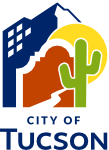Microfiche records prior to 2006 have not been completely digitized and may not be available yet on PRO. If you can not find what you are looking for please submit a records request.
Inspection History Details
Inspection Status: Approved
Inspection History: FIRE INSP - STATE LICENSE
Permit Number - T16FO00128
Inspection Description - FIRE INSP - STATE LICENSE
Inspection Status - Approved
| Date | Description | Inspector | Results | Comments |
|---|---|---|---|---|
| 04/26/2017 | FIRE INSP - STATE LICENSE | Approved | All noted fire code violations have been abated. | |
| 11/29/2016 | FIRE INSP - STATE LICENSE | Denied | TFC 509.2 Equipment access. Approved access shall be provided and maintained for all fire protection equipment to permit immediate safe operation and maintenance of such equipment. Storage, trash and other materials or objects shall not be placed or kept in such a manner that would prevent such equipment from being readily accessible. 1) You shall provide keys for all interior electric panels that are locked and Provide disconnection for room outlets and light switches. TFC 903.3.1.1 NFPA 13 sprinkler systems. Where the provisions of this code require that a building or portion thereof be equipped throughout with an automatic sprinkler system in accordance with this section, sprinklers shall be installed throughout in accordance with NFPA 13 except as provided in Section 903.3.1.1.1. 1) The placement of several mattresses in vacant patient rooms in a currently unoccupied wing of the facility has a placed those particular rooms in a hazard class that this building's sprinkler system was not designed to protect. Heat release from several stacked mattresses can overwhelm the capability of the sprinkler heads within that room, limiting the fire sprinkler system's ability to control the fire to the level it was designed for. You shall limit the number of mattresses per room to the number of beds that each room was designed to have per the approved building plans. TFC 1008.1.9 Door operations. Except as specifically permitted by this section egress doors shall be readily openable from the egress side without the use of a key or special knowledge or effort. 1) The exit door from the kitchen (near the dish washing area) into the dining area requires the use of a key. Regardless of whether it is habit to lock it or leave it unlocked, it leaves the possibility that this exit may not meet this code requirement, due to human error. You shall remove the key locking cylinder on the egress side of this door. You may replace it with a thumb turn bolt. TFC 703.2 Opening protectives. Opening protectives shall be maintained in an operative condition in accordance with NFPA 80. Where allowed by the fire code official, the application of field-applied labels associated with the maintenance of opening protectives shall follow the requirements of the approved third-party certification organization accredited for listing the opening protective. Fire doors and smoke barrier doors shall not be blocked or obstructed, or otherwise made inoperable. Fusible links shall be replaced promptly whenever fused or damaged. Fire door assemblies shall not be modified. 1) You shall remove the foot pedal that has been placed on the bottom of the fire doors to your dining area. This is a modification to the fire door and renders the existing magnetic hold open / automatic closing device( which is tied into your fire alarm system) useless in the event of a fire. NOTE: You are within your maximum allowable quantities of oxygen in storage. Your max allowable is 1500 cubic ft. ( with a 100% increase for a fully sprinkled building) bringing your max allowable quantity to 3000 cubic ft. in storage. Your current amount with holders for 60 full 'E' size cylinders is 1500 cubic ft. Empty oxygen cylinders stored in the same room do count as full containers. |
